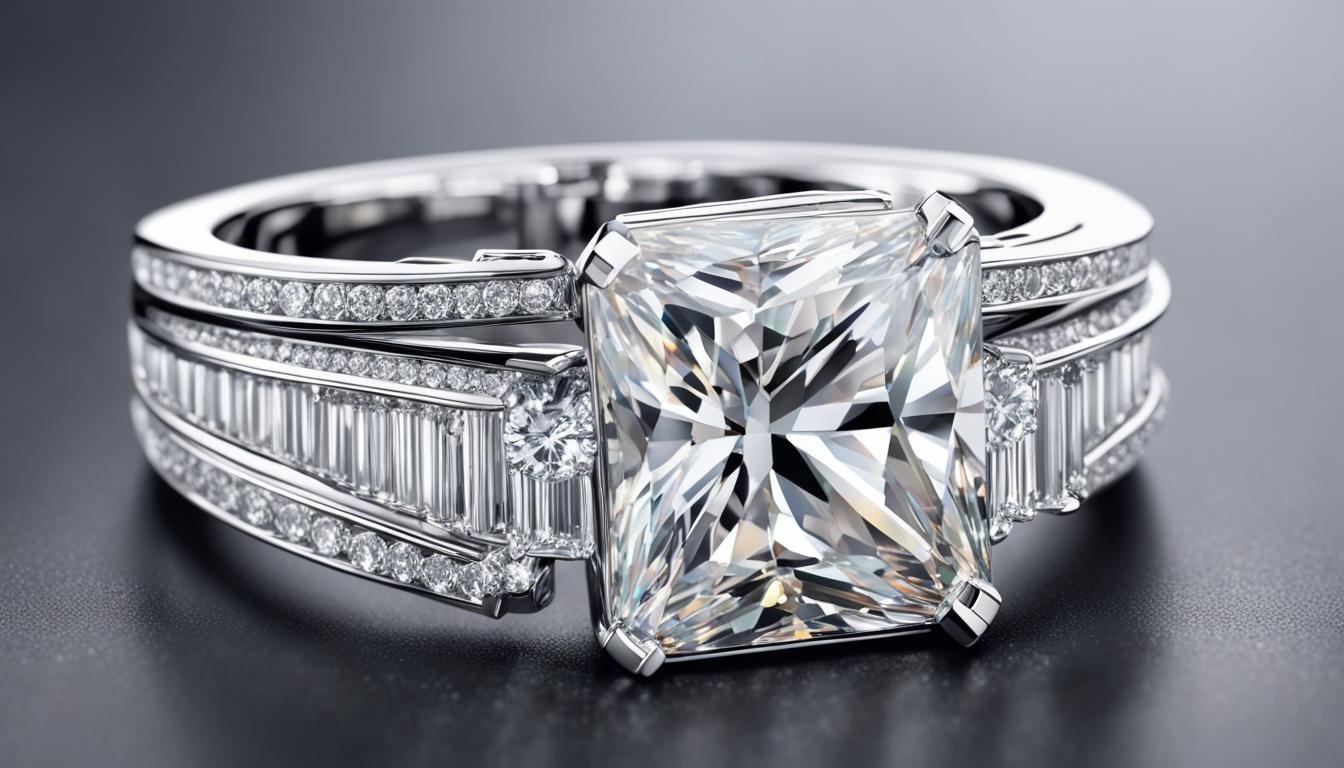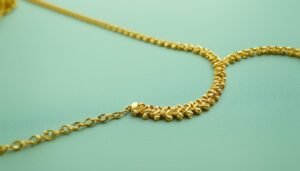Is White Gold Magnetic?
White gold is a popular choice for jewelry, known for its elegant appearance and versatility. However, many people wonder whether white gold is magnetic or not.
In this article, we will explore the truth about white gold magnetism and debunk common misconceptions.
By understanding the composition of white gold and the influence of alloys, we can determine the magnetic properties of this precious metal. We will also discuss the magnet test and other DIY gold testing methods to help you authenticate white gold jewelry.
Additionally, we will provide expert insights from jewelers and tips for buying quality white gold. By the end of this article, you will have a comprehensive understanding of the magnetism of white gold and be empowered as an informed consumer.
Key Takeaways:
- White gold is not magnetic in general, but slight magnetism may be observed due to the presence of other metals in the alloy.
- The magnet test is a useful but not definitive method for assessing gold authenticity; other tests and professional evaluations should be considered.
- Understanding the science of magnetism in metals and debunking common myths can help consumers make educated choices when purchasing white gold jewelry.
- Building trust with reputable sellers, reading gold markings, and seeking certification are essential for ensuring the quality and authenticity of white gold.
- Knowledge empowers consumers to appreciate the beauty and craftsmanship of white gold jewelry and make informed purchase decisions.
The Allure of White Gold: Composition and Popularity
White gold is a precious metal that has a lustrous and sophisticated appearance. Unlike yellow gold, which is pure gold mixed with alloy metals, white gold is an alloy made by mixing pure gold with other metals such as silver, palladium, or nickel. The addition of these metals gives white gold its unique color and increases its durability. It is important to note that white gold jewelry is typically plated with rhodium, a rare and precious metal, to enhance its shine and further protect the underlying metal.
White gold’s popularity stems from its modern and elegant look, making it a popular choice for engagement rings, wedding bands, and other jewelry pieces. Its versatile color creates a stunning backdrop for a wide range of gemstones, including diamonds, sapphires, and emeralds. Additionally, white gold offers the advantage of being more affordable than platinum, making it an attractive option for those seeking luxury without breaking the bank.
With its exquisite composition and timeless appeal, white gold continues to captivate jewelry enthusiasts worldwide. Whether it’s a symbol of love or a fashion statement, white gold jewelry lets you shine with style and sophistication.
Evaluating Jewelry: The Magnet Test Explained
Understanding the Magnet Test for Gold
The magnet test is a simple and commonly used method to evaluate the authenticity of gold jewelry. This test relies on the fact that pure gold is not magnetic, while certain metals in gold alloys can exhibit magnetic properties. By using a magnet, you can determine whether the jewelry is attracted to it or not. If the gold piece is not attracted to the magnet, it suggests that it is made of pure gold.
However, it is important to note that the magnet test is not foolproof and should not be the sole method for determining the authenticity of gold. While it can provide initial insights, further testing and evaluation may be required to ascertain the true nature of the jewelry.
Steps to Perform a Magnet Test at Home
To perform the magnet test at home, you will need the following:
- A magnet
- The piece of jewelry you wish to assess
Follow these steps to perform the magnet test:
- Hold the magnet near the gold jewelry without direct contact.
- Observe whether the gold piece is attracted to the magnet or not.
- If the gold is not attracted to the magnet, it indicates a higher likelihood of purity.
It is important to repeat that the magnet test is not definitive and should be used as a preliminary assessment. Consulting with a professional jeweler or utilizing additional gold testing methods can provide a more comprehensive evaluation of the authenticity of gold jewelry.
Note: The magnet test is not a substitute for expert evaluation and may not be effective in all cases. It is always advisable to seek professional guidance when assessing the authenticity of gold jewelry.
Is White Gold Magnetic?
Now that we understand the magnet test and how it is used to evaluate gold jewelry, let’s address the question of whether white gold is magnetic. In general, white gold is not magnetic. This is because white gold is typically made with alloy metals that are not magnetic, such as silver and palladium. However, the presence of other metals like iron or nickel in white gold alloys can make the jewelry slightly magnetic. It is important to note that the level of magnetism in white gold is usually very weak and often undetectable by everyday magnets. Therefore, if your white gold jewelry is slightly magnetic, it does not necessarily indicate that it is of low quality or not authentic.
The Influence of Alloys on Magnetic Properties
The magnetic properties of white gold are influenced by the alloys used in its composition. Iron and nickel are two metals commonly found in gold alloys that can contribute to magnetism. Iron, in particular, possesses strong magnetic properties. When gold alloys with iron or nickel metals interact with a magnet, they may exhibit some degree of magnetism. The presence, amount, and composition of these alloys in white gold can determine the level of magnetism exhibited by the jewelry.
It is important to note that the presence of iron or nickel in white gold alloys does not necessarily indicate low quality or inauthenticity. White gold alloys are carefully formulated to achieve the desired color, durability, and other characteristics. While some consumers may prefer white gold jewelry that exhibits no magnetism, others may find the slight magnetism resulting from alloy metals acceptable or even desirable. Therefore, the magnetism of white gold should not be the sole determining factor when assessing its quality or authenticity.
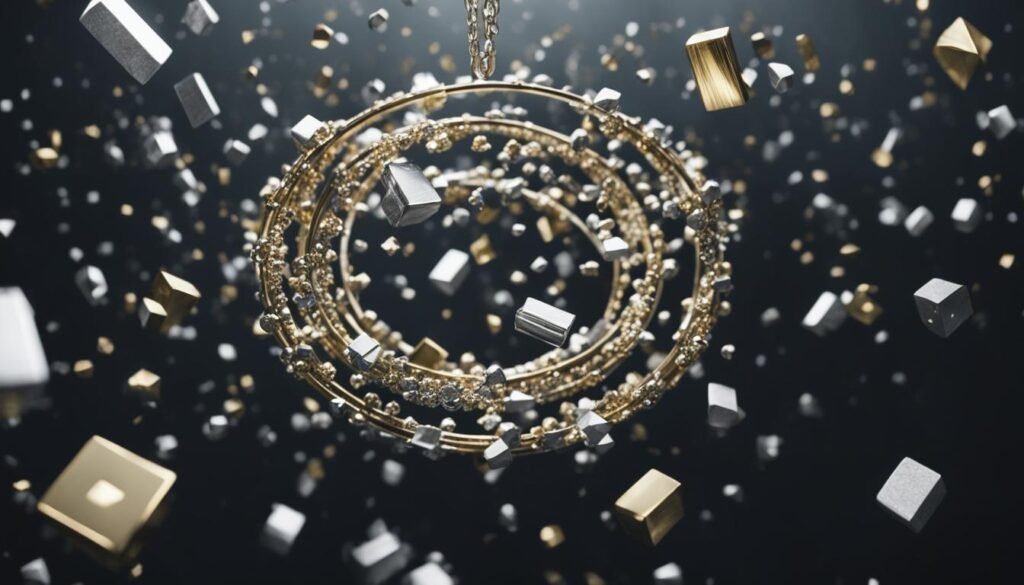
The image above visually represents the influence of iron and nickel alloys on the magnetic properties of white gold. Please refer to the image for a better understanding of the subject matter.
False Alarms: When Your White Gold May Seem Magnetic
While white gold is generally not magnetic, there are some exceptions that may cause white gold jewelry to appear magnetic. One such exception is the presence of magnetic clasps in white gold jewelry. Magnetic clasps are commonly used in necklaces and bracelets for their convenience and ease of use. These clasps contain magnets that attract each other to secure the jewelry piece. These magnets can create a magnetic effect on the overall piece, giving the impression that the white gold is magnetic.
It is important to note that the magnetism in these cases is coming from the clasp itself, not the white gold. Therefore, if only the clasp or chain appears magnetic, it does not indicate that the entire piece of white gold jewelry is magnetic.
Exceptions to the Rule: Clasps and Chains
The presence of magnetic clasps can give the impression that white gold jewelry is magnetic.
Understanding the Presence of Magnetic Clasps
Magnetic clasps are used in necklaces and bracelets to secure the jewelry piece. The magnets in these clasps create a magnetic effect on the overall piece, which may falsely indicate that the white gold is magnetic.
Detecting Fakes: Other DIY Gold Testing Methods
In addition to the magnet test, there are other DIY gold testing methods that can help you detect fake gold. These methods provide additional insights into the authenticity of gold jewelry and can be easily performed at home. Two popular DIY tests are the water test and the skin test.
The Water Test: Density Tells the Tale
The water test involves dropping the gold into a jug of water to observe its behavior. Real gold, being a dense metal, will sink directly to the bottom of the water. On the other hand, fake gold, being lighter, will float or exhibit other behaviors such as spinning or moving around on the surface. By carefully observing the behavior of the gold in water, you can gain clues about its authenticity.
Perform the water test by following these steps:
- Fill a clear container or jug with water.
- Gently drop the gold jewelry or object into the water.
- Observe whether the gold sinks to the bottom or floats on the surface.

Note: This test is not foolproof and should be used as a preliminary test. Other factors such as shape, design, and surface tension of the gold object can affect its behavior in water. Therefore, it is advisable to consult with a professional jeweler for a definitive assessment.
The Skin Test: Watching for Color Changes
The skin test involves wearing or holding the gold jewelry and observing any color changes on your skin. Pure gold does not react with sweat or oil from the skin, so if you see black or green marks, it indicates that the gold may be less pure or not authentic.
To perform the skin test:
- Wear or hold the gold jewelry for an extended period, preferably a few hours.
- Observe if your skin develops any discoloration or marks.
- Note any changes in color or allergic reactions.
Discoloration or marks on the skin can indicate that the gold jewelry contains other metals or alloys that may not be authentic or of high quality.
Please keep in mind that the skin test is not confirmatory and should be used as an additional method for evaluating gold jewelry. For a definitive assessment, it is always recommended to consult with a professional jeweler.
Decoding Hallmarks: Assessing Gold Purity
When it comes to evaluating the purity and authenticity of gold jewelry, hallmarks play a crucial role. These markings or stamps provide valuable information about the composition and quality of the gold. By understanding how to read these gold markings, you can make informed decisions about your white gold jewelry.
How to Read Gold Markings
Reading gold markings may seem like a complex task, but with a little knowledge, it becomes much simpler. The most common type of gold marking is the karat mark, which indicates the percentage of gold content in the jewelry. For instance, 24K gold is considered pure gold, while 18K gold contains 75% pure gold. These karat marks are often represented by numbers or symbols, such as “24K” or “18K”.
Other markings on gold jewelry may provide additional information, such as the manufacturer’s signature, the country of origin, or specific certifications. These additional markings can help you determine the authenticity and origin of the piece.
What Different Hallmarks Mean
Understanding the meaning behind different hallmarks can provide valuable insights into the quality and authenticity of your white gold jewelry. Here are some common hallmarks and their significance:
- Karat Marks: These marks indicate the purity of the gold jewelry, with higher karat numbers representing higher gold content. For example, 14K gold contains 58.3% pure gold, while 10K gold contains 41.7% pure gold.
- Manufacturer’s Mark: This hallmark represents the logo or signature of the jewelry manufacturer, helping to identify the brand or artist behind the piece.
- Country of Origin: Some gold jewelry may have a country-specific hallmark, indicating the country where the jewelry was manufactured or where it underwent testing and certification.
- Certification Marks: Certain certifications, such as the “925” mark, indicate that the jewelry is made from sterling silver, which is an alloy containing 92.5% silver and 7.5% other metals.
By familiarizing yourself with these hallmarks, you can gain valuable insights into the quality and purity of your white gold jewelry. However, it’s important to note that the absence of certain hallmarks doesn’t necessarily indicate low quality or inauthenticity. Some jewelry may not have extensive markings but can still be of high quality. Consulting with a professional jeweler can provide further guidance and assurance when assessing gold purity.
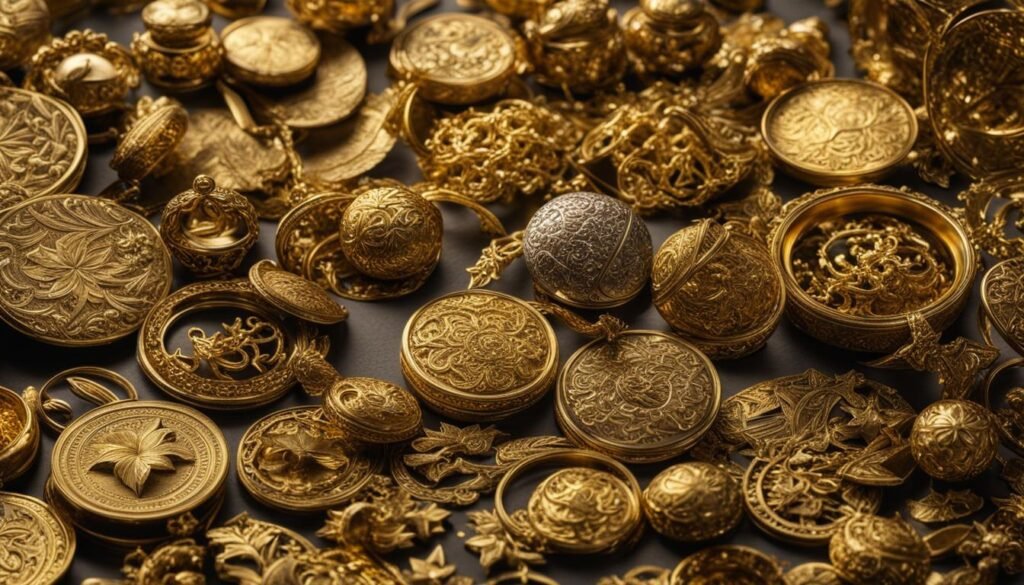
The Science of Magnetism in Metals
To understand the magnetism of white gold, it is important to grasp the basic principles of magnetism in metals. Magnetism is a property exhibited by certain materials that create a magnetic field. It is caused by the alignment and movement of electrons within the material. Pure metals, in their natural state, are not magnetic because the electrons within them do not align in a way that creates a magnetic field. However, when metals are alloyed with magnetic elements or impurities, such as iron or nickel, they can become magnetic or exhibit some degree of magnetism. These magnetic properties can vary based on the composition and arrangement of atoms within the metal.

Magnetic Attraction: Myths Versus Reality
There are several common myths surrounding the magnetism of gold, including white gold. It is important to separate fact from fiction to have a clear understanding of how gold interacts with magnets.
Common Myths About Gold and Magnetism
One common myth is that all gold, including white gold, is magnetic. This is not true, as pure gold is not magnetic. Another myth is that the strength of magnetism indicates the quality or purity of gold. Magnetism is not a reliable indicator of gold quality or purity, as the presence of other metals or alloys can affect magnetic properties.
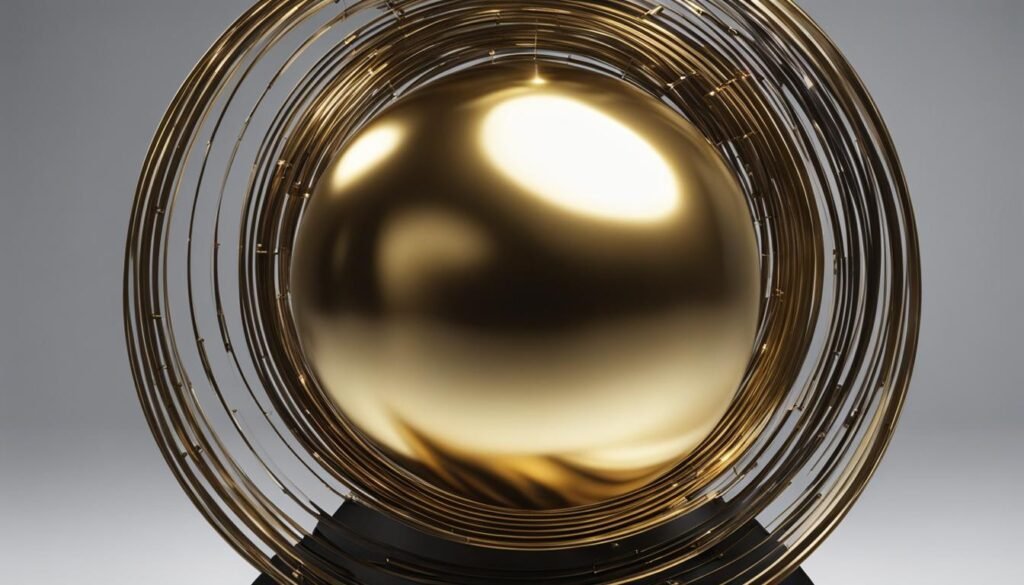
The Facts: What Really Attracts a Magnet?
The facts show that while some white gold alloys can exhibit slight magnetism due to the presence of magnetic metals, the level of magnetism is typically very weak and often undetectable by everyday magnets. It is important to understand that magnetism is influenced by the composition and arrangement of atoms within the metal.
Expert Insights: What Jewelers Say About White Gold and Magnetism
Jewelers, with their expertise and experience, can provide valuable insights into the magnetism of white gold and methods for authenticating gold jewelry. Professionals often use a combination of tests and tools to assess gold’s authenticity, including magnet tests, acid tests, and specific gravity tests. Additionally, jewelers emphasize the importance of buying from reputable sellers and ensuring certification or hallmarks that guarantee the quality and purity of gold. They also advise consulting with a professional jeweler for a thorough evaluation and explanation of the characteristics of white gold jewelry to make an informed purchase decision.
White Gold in the Marketplace: Quality and Consumer Trust
When buying white gold jewelry, it is essential to ensure that you are purchasing high-quality pieces and building trust with reputable sellers. To ensure you’re buying quality white gold, consider factors such as the reputation of the seller, customer reviews and testimonials, and the presence of appropriate certifications or hallmarks on the jewelry. Reputable sellers will provide detailed information about the composition, purity, and authenticity of the white gold they offer. Certification from recognized organizations or independent appraisals can further validate the quality and value of white gold jewelry. By choosing trusted sellers and seeking certification, you can have confidence in your white gold purchases and build long-term consumer trust.
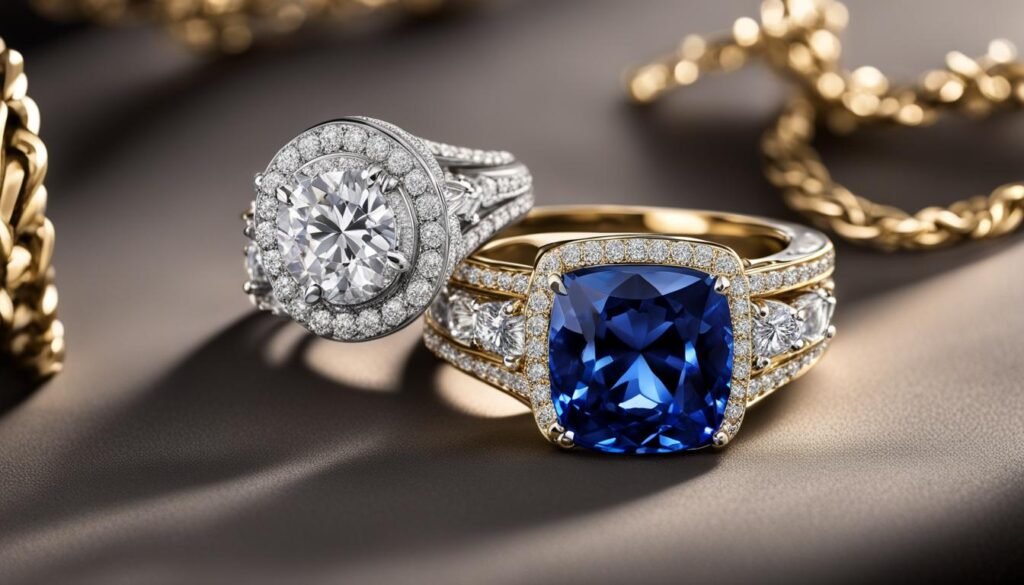
How to Ensure You’re Buying Quality White Gold
When it comes to buying quality white gold, there are a few key steps you can take to ensure you’re making a wise investment:
- Research reputable jewelry retailers known for selling high-quality white gold.
- Read customer reviews and testimonials to gain insights into the seller’s reputation and customer satisfaction.
- Check for appropriate certifications or hallmarks on the white gold jewelry, such as those indicating purity and authenticity.
- Ask the seller for detailed information about the composition of the white gold, including the types of alloys used.
- Consider consulting with a professional jeweler who can provide expert advice and guidance on purchasing quality white gold.
The Importance of Trusted Sellers and Certification
Trusted sellers play a crucial role in the white gold market. They prioritize customer satisfaction and ensure that their white gold jewelry meets the highest standards of quality and authenticity. By purchasing from trusted sellers, you minimize the risk of buying counterfeit or low-quality white gold.
Certification is another important aspect when it comes to buying white gold. Look for jewelry that has been certified by reputable organizations. These certifications provide assurance that the white gold meets industry standards for purity and quality. Reputable sellers will often offer certifications or provide proper documentation that verifies the authenticity and quality of their white gold products.
By choosing trusted sellers and seeking certification, you can buy white gold with confidence, knowing that you are getting a high-quality and genuine product. Investing in certified white gold from trusted sellers not only ensures the value of your purchase but also builds consumer trust in the white gold market as a whole.
Conclusion
In conclusion, white gold is generally not magnetic, although slight magnetism may be observed due to the presence of other metals in the alloy. While the magnet test is a useful initial method for assessing gold authenticity, it should not be the sole determining factor. To obtain a comprehensive assessment, it is recommended to consider other DIY tests and seek professional evaluations.
By understanding the science of magnetism in metals and debunking common myths, you can make informed decisions when purchasing white gold jewelry. It’s important to build trust with reputable sellers who provide detailed information about the composition, purity, and authenticity of their white gold. Reading gold markings and seeking certification from recognized organizations or independent appraisals can further validate the quality and value of your white gold jewelry.
Knowledge is power when it comes to being an informed consumer. By staying informed, you can confidently appreciate the beauty and craftsmanship of white gold jewelry while ensuring that your purchases are of high quality and authenticity. Remember to consider a combination of factors, including magnetism, certification, and reputation, to make educated choices that align with your preferences and values.
FAQ About Is White Gold Magnetic
Is White Gold Magnetic? Uncover the Truth
White gold is generally not magnetic, although slight magnetism may be observed due to the presence of other metals in the alloy.
What Is White Gold Made Of?
White gold is an alloy made by mixing pure gold with other metals such as silver, palladium, or nickel.
Why Choose White Gold Over Other Metals?
White gold offers a lustrous and sophisticated appearance, versatility, and the ability to complement a wide range of gemstones. It is also more affordable than platinum.
Understanding the Magnet Test for Gold
The magnet test is a commonly used method to evaluate the authenticity of gold jewelry. It involves using a magnet to determine whether the jewelry is attracted to the magnet or not.
Steps to Perform a Magnet Test at Home
To perform a magnet test at home, simply hold a magnet up to the gold jewelry and observe whether it sticks or not. If the gold is attracted to the magnet, it indicates that it is not pure gold.
The Role of Iron and Nickel in Gold Alloys
Iron and nickel are metals that can be present in white gold alloys and contribute to magnetism. The presence and composition of these alloys can determine the level of magnetism in white gold.
How Different Alloys Affect Magnetism in White Gold
The amount and composition of iron or nickel in white gold alloys can determine the level of magnetism. However, the presence of these metals does not necessarily indicate low quality or inauthenticity.
Exceptions to the Rule: Clasps and Chains
Some white gold jewelry may appear magnetic due to the presence of magnetic clasps or chains. The magnetism is coming from the clasp or chain, not the white gold itself.
The Water Test: Density Tells the Tale
The water test involves dropping the gold into a jug of water to observe its behavior. Real gold, being a dense metal, will sink directly to the bottom of the water.
The Skin Test: Watching for Color Changes
The skin test involves observing any color changes on the skin after wearing or holding the gold. Pure gold does not react with sweat or oil from the skin, so black or green marks indicate less purity or authenticity.
How to Read Gold Markings
Gold markings, such as karat marks, indicate the purity of the gold. Familiarizing yourself with these hallmarks can help you assess the quality and authenticity of white gold jewelry.
What Different Hallmarks Mean
Karat marks represent the percentage of gold content in the jewelry. Other markings may indicate the manufacturer, country of origin, or specific certifications.
Basic Principles of Magnetism
Magnetism is a property exhibited by certain materials that create a magnetic field. It is caused by the alignment and movement of electrons within the material.
Why Pure Metals Are Not Magnetic
Pure metals are not magnetic because the electrons within them do not align in a way that creates a magnetic field.
Common Myths About Gold and Magnetism
Common myths include the belief that all gold is magnetic or that the strength of magnetism indicates gold quality or purity.
The Facts: What Really Attracts a Magnet?
The facts show that while some white gold alloys can exhibit slight magnetism due to the presence of magnetic metals, the level of magnetism is typically very weak and often undetectable by everyday magnets.
The Professional’s Approach to Testing Gold
Professionals use a combination of tests and tools, including magnet tests, acid tests, and specific gravity tests, to assess gold authenticity.
Jewelers’ Tips for Authenticating White Gold
Jewelers emphasize the importance of buying from reputable sellers, ensuring certification or hallmarks, and consulting with a professional for thorough evaluations and explanations of white gold characteristics.
How to Ensure You’re Buying Quality White Gold
Factors to consider include the reputation of the seller, customer reviews, testimonials, and the presence of appropriate certifications or hallmarks on the jewelry.
The Importance of Trusted Sellers and Certification
Trusted sellers provide detailed information about the composition, purity, and authenticity of white gold. Certification from recognized organizations validates the quality and value of white gold jewelry.
Final Thoughts on the Magnetism of White Gold
White gold is generally not magnetic, and magnetism should not be the sole determinant of gold quality or authenticity. It is important to consider other tests and consult with professionals for a comprehensive evaluation.
Knowledge Is Power: Being an Informed Consumer
Understanding the science of magnetism in metals and debunking common myths empowers consumers to make educated choices and appreciate the beauty and craftsmanship of white gold jewelry.

